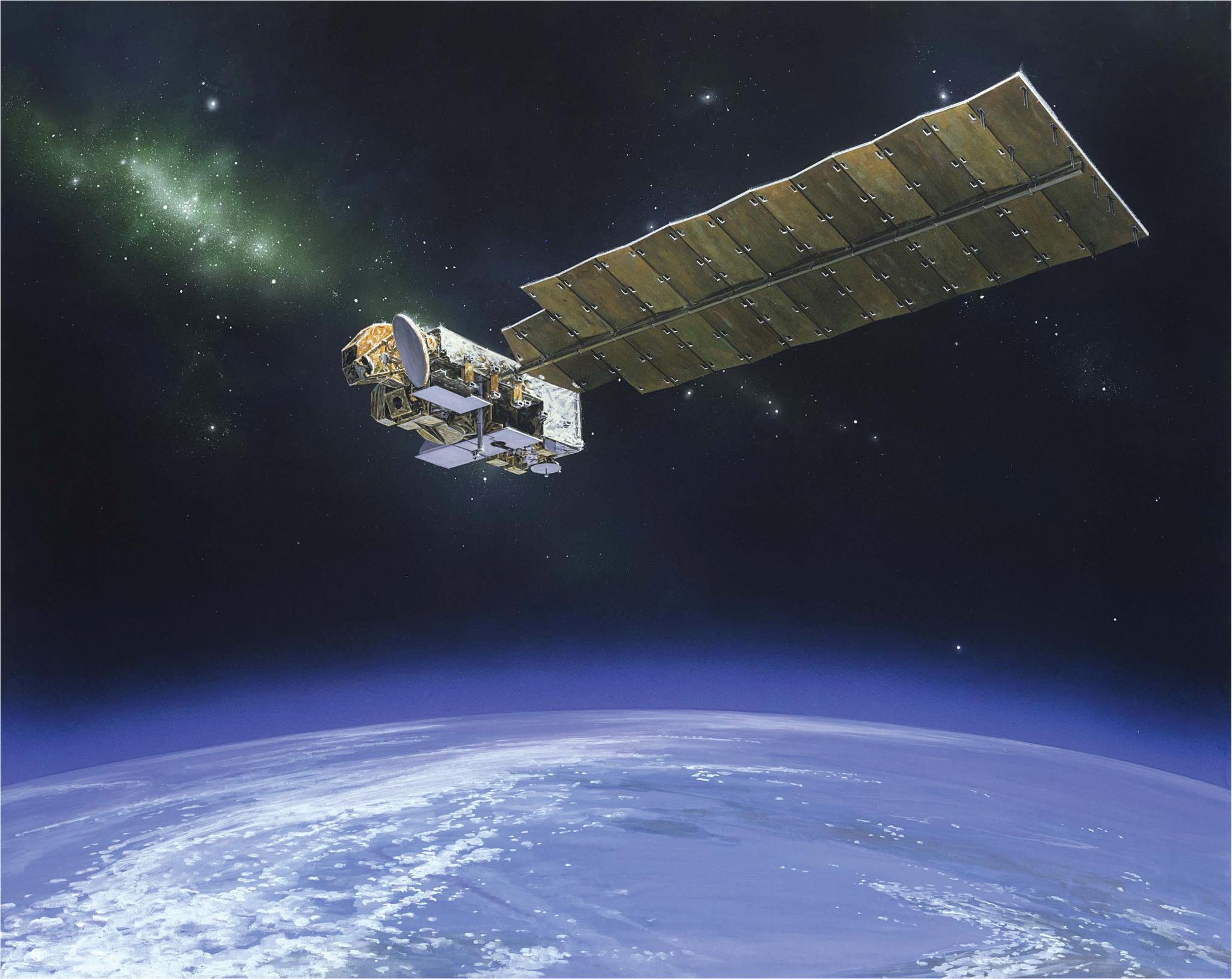4 Min Read NASA Celebrates 20 Years of Earth-Observing Aura Satellite 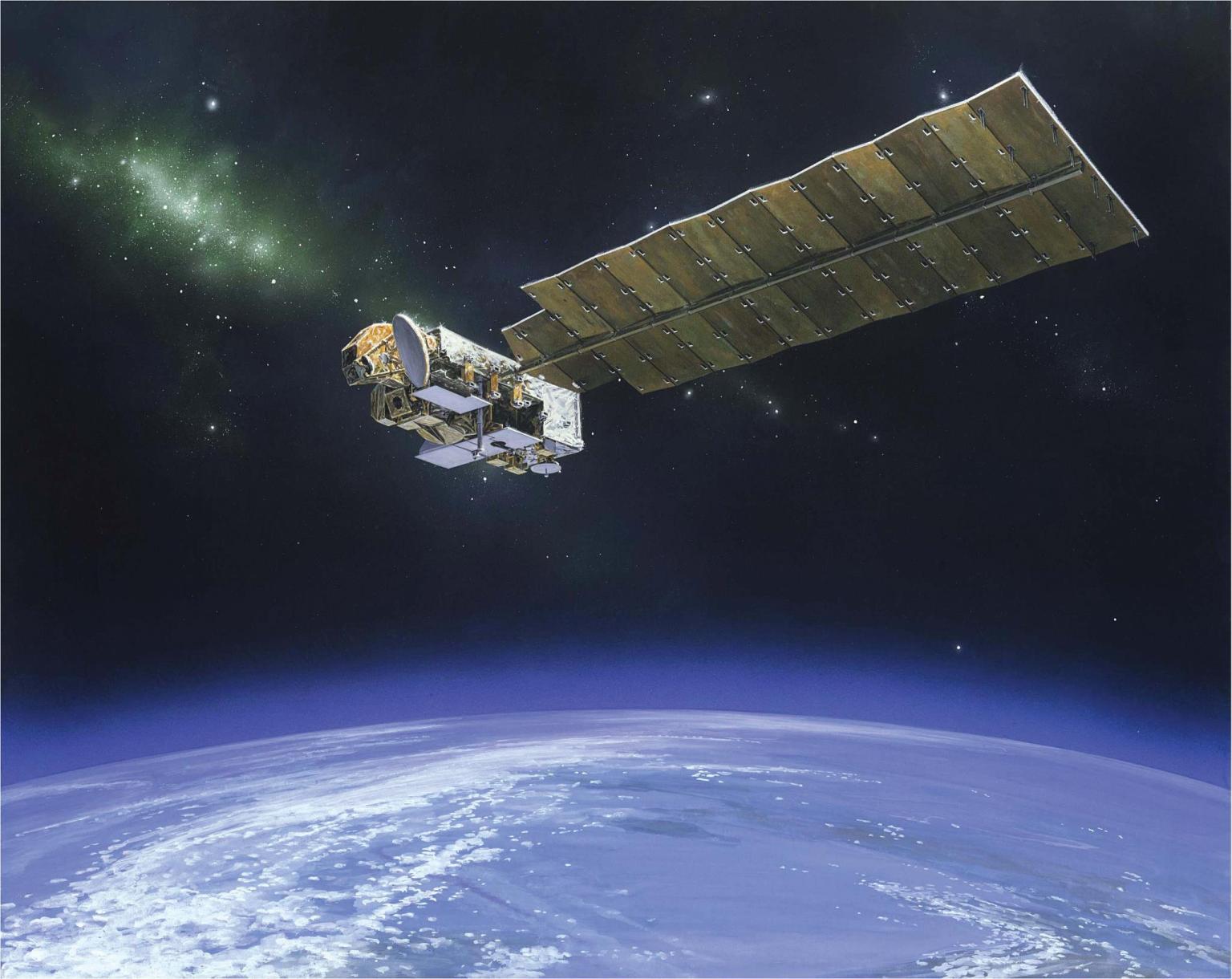 The Aura spacecraft, shown in this artist’s concept, is a NASA atmospheric chemistry mission that monitors Earth’s protective atmosphere. Credits:
The Aura spacecraft, shown in this artist’s concept, is a NASA atmospheric chemistry mission that monitors Earth’s protective atmosphere. Credits:
NASA Earth (ESD) Earth Home Explore Climate Change Science in Action Multimedia Data For Researchers From monitoring the hole in the ozone above the Antarctic to studying air quality around the entire planet, NASA’s Aura satellite has provided scientists with essential measurements during its two decades in orbit.
“The Aura mission has been nothing short of transformative for scientific research and applied sciences,” said Bryan Duncan, project scientist for NASA’s Aura satellite mission. “The mission’s data have given scientists and applied scientists an unparalleled view of air pollution around the world.”
Aura has revealed the effects of industrialization, environmental regulations, wildfires, the COVID-19 pandemic, and many other aspects of the air we breathe. The satellite paved the way for recent missions to study the atmosphere and its inner workings, including PACE and TEMPO. As the Aura mission team celebrates its launch anniversary of July 15, 2004, here are a few of the many highlights from the last 20 years.
Aura Eyes Ozone Hole over Antarctica The first publicly released image from the Aura mission (autumn 2004) showed dramatically depleted levels of ozone in the stratosphere over Antarctica.
NASA Study: First Direct Proof of Ozone Hole Recovery Due to Chemicals Ban In a 2018 study, scientists showed for the first time through direct satellite observations that levels of chlorine in the atmosphere declined, resulting in less ozone depletion. Because of an international ban on chlorine-containing manmade chemicals called chlorofluorocarbons, there was about 20% less ozone depletion during the Antarctic winter in 2016 than there was in 2005.
New NASA Satellite Maps Show Human Fingerprint on Global Air Quality 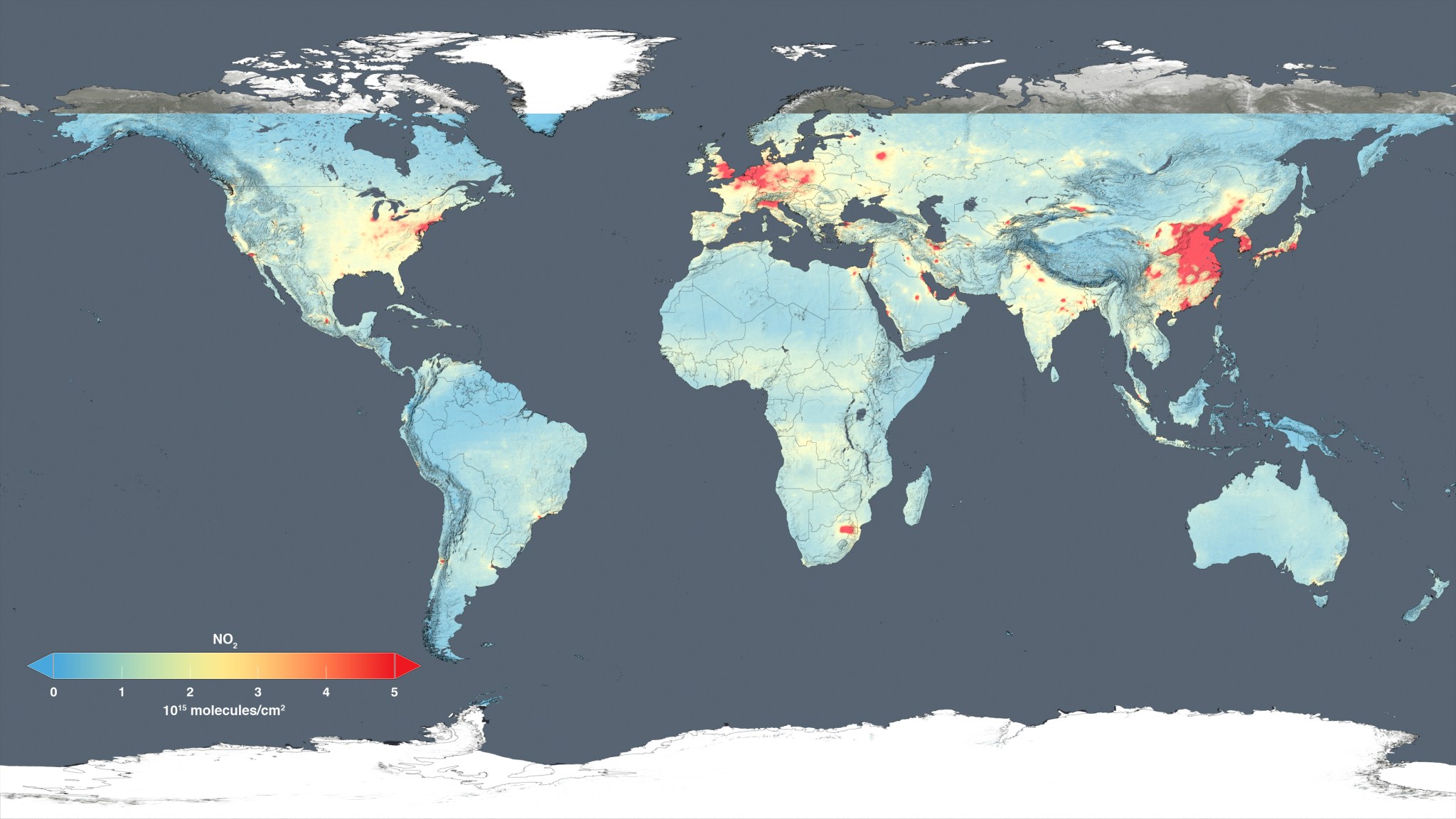 This global map shows the concentration of nitrogen dioxide in the troposphere as detected by the Ozone Monitoring Instrument aboard the Aura satellite, averaged over 2014. NASA Using high-resolution global maps of air quality indicators made with data from the Aura satellite, NASA scientists tracked air pollution trends between 2005 and 2015 in various regions and 195 cities around the globe. The study found that the United States, Europe, and Japan saw improved air quality due to emission control regulations, while China, India, and the Middle East, with their fast-growing economies and expanding industry, saw more air pollution.
This global map shows the concentration of nitrogen dioxide in the troposphere as detected by the Ozone Monitoring Instrument aboard the Aura satellite, averaged over 2014. NASA Using high-resolution global maps of air quality indicators made with data from the Aura satellite, NASA scientists tracked air pollution trends between 2005 and 2015 in various regions and 195 cities around the globe. The study found that the United States, Europe, and Japan saw improved air quality due to emission control regulations, while China, India, and the Middle East, with their fast-growing economies and expanding industry, saw more air pollution.
How NASA is Helping the World Breathe More Easily Many of NASA’s Earth-observing satellites, including Aura, can see what the human eye can’t — including potentially harmful pollutants lingering in the air we breathe. These satellites help us measure and track air pollution as it moves around the globe and have contributed significantly to a decades-long quest for cleaner air. For example, data from Aura’s Ozone Monitoring Instrument helped the EPA and NASA identify a drop in nitrogen dioxide that researchers cited as evidence of the success of the Clean Air Act.
Air Quality: A Tale of Three Cities Air quality in Beijing, Los Angeles, and Atlanta — like air quality across the globe — is dynamic. This video describes how scientists use instruments like Aura’s Ozone Monitoring Instrument to study questions including what causes ozone, sulfur dioxide, and nitrogen dioxide emissions. It also explores why reductions in volatile organic carbon pollution worked to reduce ground-level ozone in Los Angeles, but not in Atlanta.
Seeing the COVID-19 Pandemic from Space Economic and social shutdowns in response to the COVID-19 pandemic led to noticeable changes in Earth’s environment, at least in the short term. NASA researchers used satellite and ground-based observations – including nitrogen dioxide levels from Ozone Monitoring Instrument – to track these impacts on our air, land, water, and climate.
A Satellite’s View of Ship Pollution With natural-color satellite imagery of the atmosphere over the ocean, scientists have observed “ship tracks” — bright, linear trails amidst the cloud layers that are created by particles and gases from ships. Scientists used Ozone Monitoring Instrument data to detect the almost invisible tracks of nitrogen dioxide along several shipping routes from 2005 to 2012.
First Global Maps of Volcanic Emissions Use NASA Satellite Data 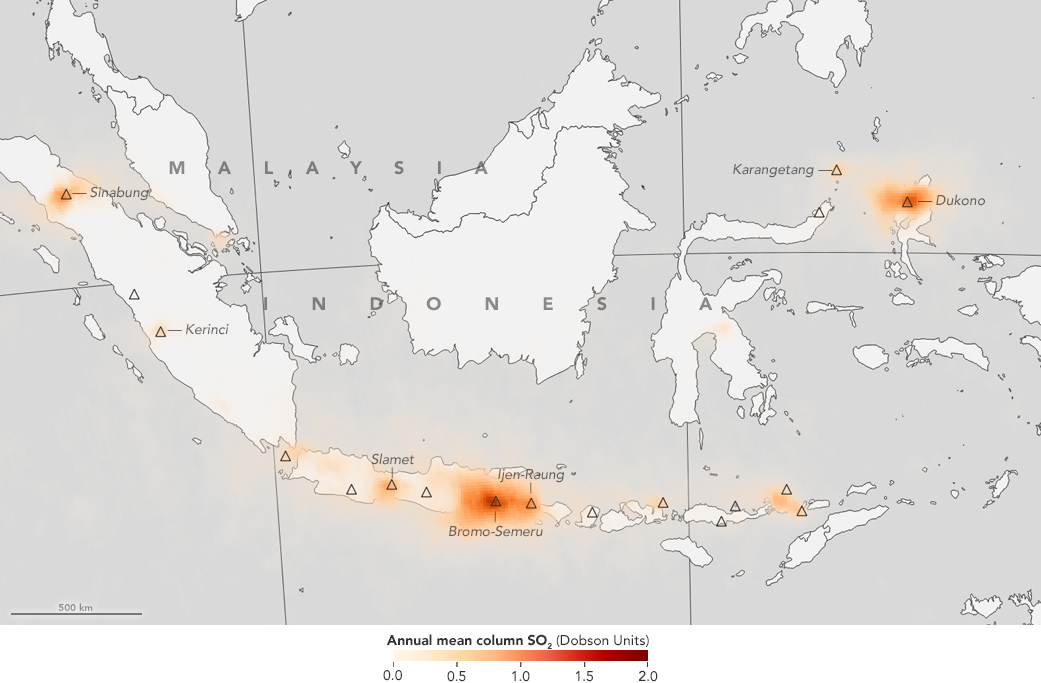 Volcanic sulfur dioxide emissions from Indonesia’s many volcanoes are shown in shades of orange. The data was produced from observations from NASA’s Aura satellite. With the Ozone Monitoring Instrument data, researchers compiled emissions data from 2005 to 2015 create the first global inventory for volcanic sulfur dioxide emissions. The data set helped refine climate and atmospheric chemistry models and provided more insight into human and environmental health risks.
Volcanic sulfur dioxide emissions from Indonesia’s many volcanoes are shown in shades of orange. The data was produced from observations from NASA’s Aura satellite. With the Ozone Monitoring Instrument data, researchers compiled emissions data from 2005 to 2015 create the first global inventory for volcanic sulfur dioxide emissions. The data set helped refine climate and atmospheric chemistry models and provided more insight into human and environmental health risks.
Scientists Show Connection Between Gas Flaring and Arctic Pollution Flaring of excess natural gas from industrial oil fields in the Northern Hemisphere was found to be a potentially significant source of nitrogen dioxide and black carbon emissions polluting the Arctic, according to a 2016 NASA study that included data from Aura.
2023 Ozone Hole Ranks 16th Largest, NASA and NOAA Researchers Find Researchers continue to rely on Aura data to monitor the Antarctic ozone hole, two decades after the satellite launched. Each Southern Hemisphere spring, NASA and NOAA (National Oceanic and Atmospheric Administration) use satellite and balloon-based measurements to measure the maximum size of the ozone hole. The story above notes the 2023 result; stay tuned for what Aura helps us discover in 2024 and beyond.
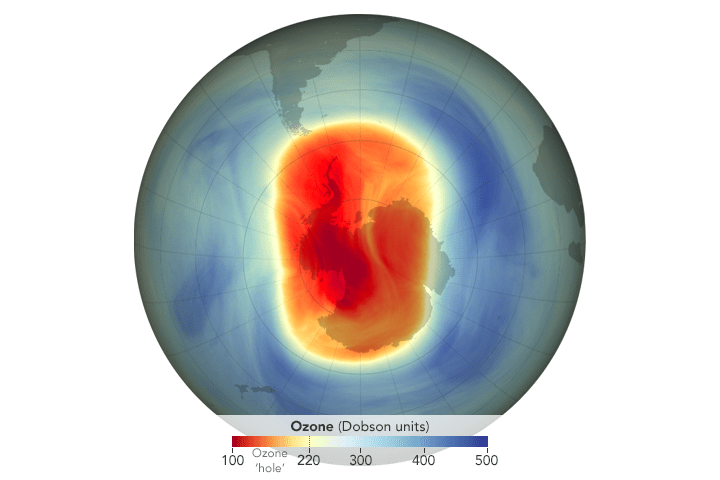 This map shows the size and shape of the ozone hole over the South Pole on Sept. 21, 2023, the day of its maximum extent that year, as calculated by the NASA Ozone Watch team. Moderate ozone losses (orange) are visible amid widespread areas of more potent ozone losses (red). By Erica McNamee and Kate Ramsayer
This map shows the size and shape of the ozone hole over the South Pole on Sept. 21, 2023, the day of its maximum extent that year, as calculated by the NASA Ozone Watch team. Moderate ozone losses (orange) are visible amid widespread areas of more potent ozone losses (red). By Erica McNamee and Kate Ramsayer
NASA’s Goddard Space Flight Center, Greenbelt, Md.
Details Last Updated Jul 16, 2024 Editor Erica McNamee Contact Erica McNamee erica.s.mcnamee@nasa.gov Location Goddard Space Flight Center Related Terms Aura Earth Tropospheric Emissions: Monitoring of Pollution (TEMPO)
Keep Exploring Discover More Topics From NASA Aura
Earth Orbiter
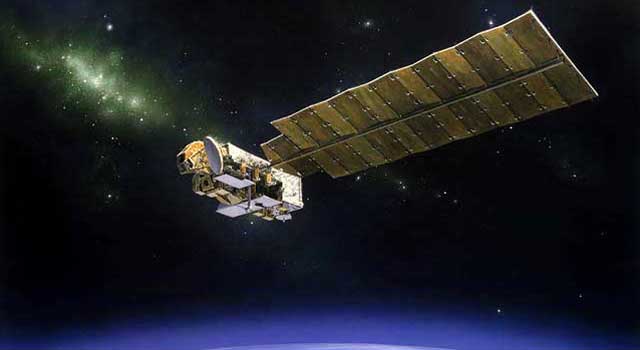
Your home. Our Mission. And the one planet that NASA studies more than any other.
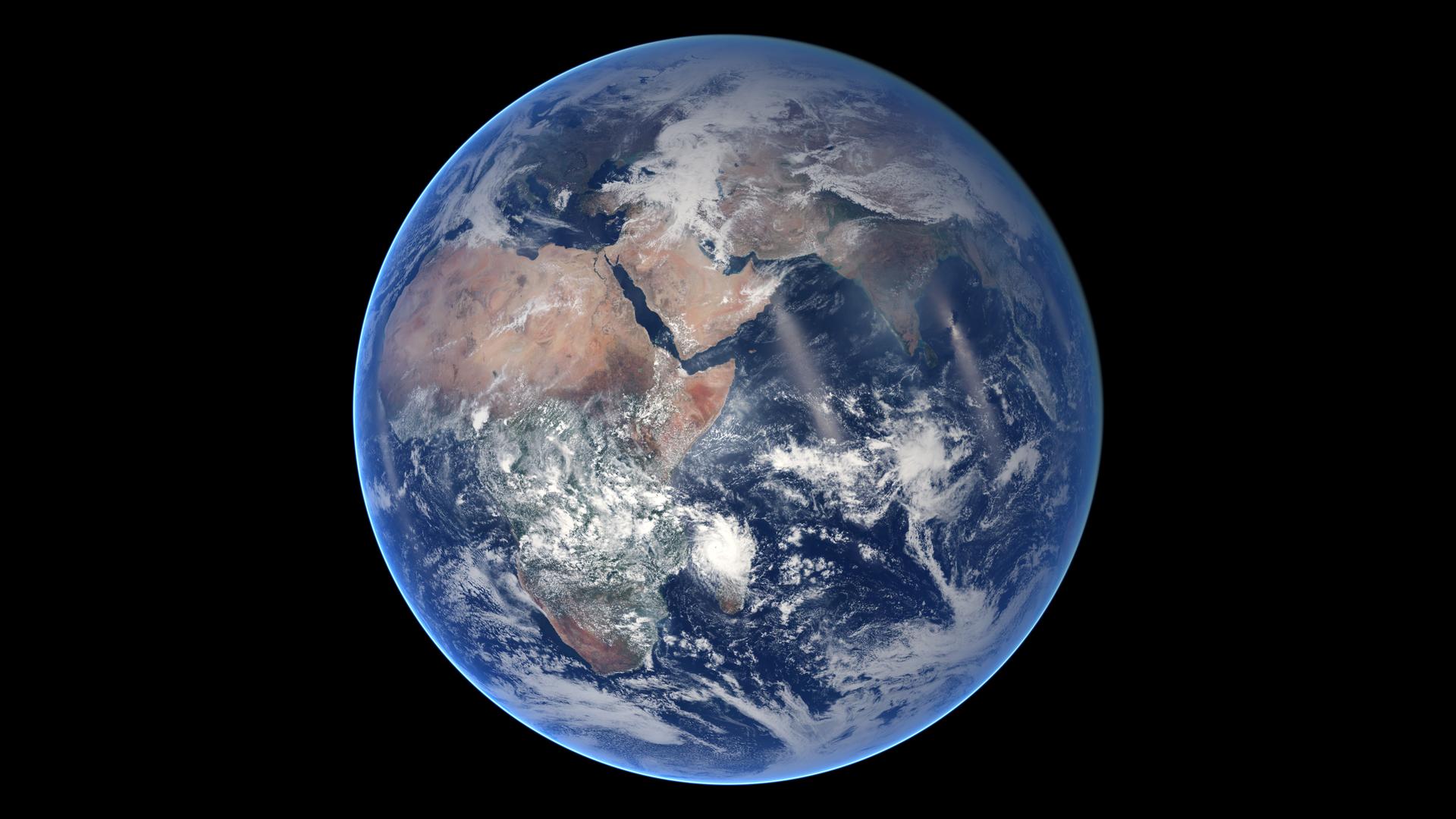
NASA is a global leader in studying Earth’s changing climate.

PACE will help us better understand our ocean and atmosphere by measuring key variables associated with cloud formation, particles and…
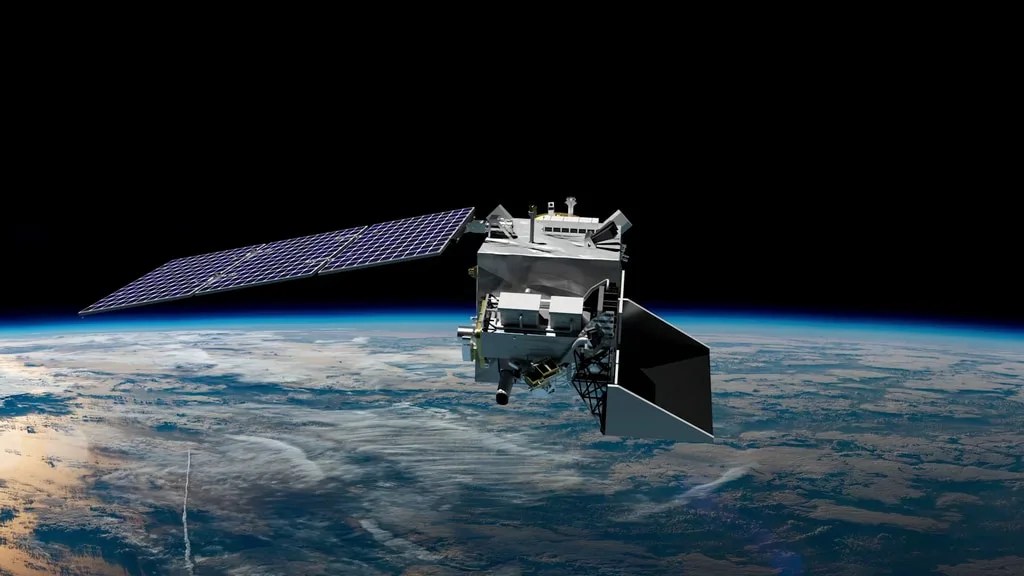

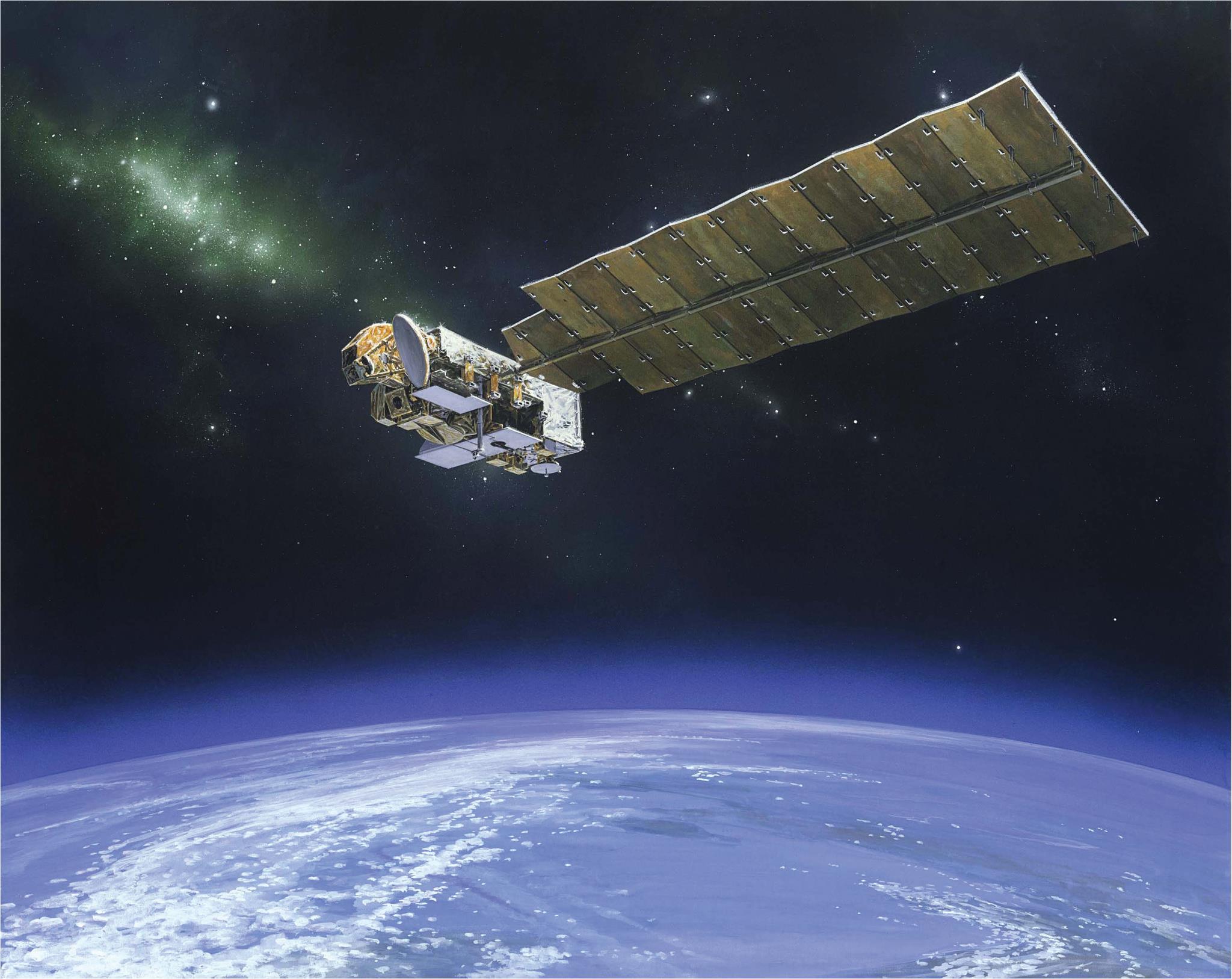
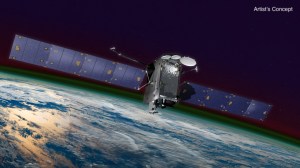 5 min read Alphabet Soup: NASA’s GOLD Finds Surprising C, X Shapes in Atmosphere
5 min read Alphabet Soup: NASA’s GOLD Finds Surprising C, X Shapes in Atmosphere
 4 min read NASA Announces New System to Aid Disaster Response
4 min read NASA Announces New System to Aid Disaster Response
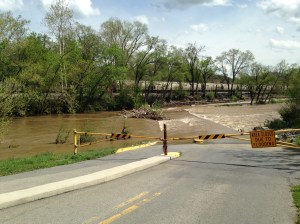 2 min read North Carolina Volunteers Work Toward Cleaner Well Water When the ground floods during a storm, floodwaters wash bacteria and other contaminants into private…
2 min read North Carolina Volunteers Work Toward Cleaner Well Water When the ground floods during a storm, floodwaters wash bacteria and other contaminants into private…
